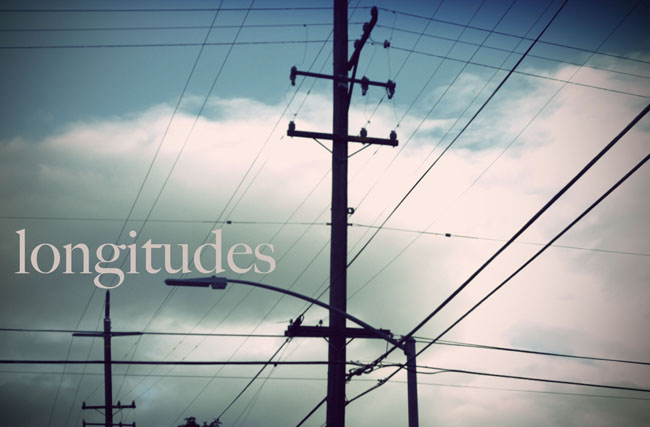An interstice, as I’m sure all of you geniuses know, is a small or narrow space between parts. To write on the interstices can mean to produce work that blurs the lines between genres, that straddles the boundary between high- and low-brow art, that thrives in the gap between disciplines, that combines different artistic media or even different languages…well, apparently, it can mean a lot of things.
If you’re a writer who likes to subvert readerly expectations and occasionally break the rules, the emergence of “interstitial writing” as a category in its own right should be of interest to you.
The term “interstitial writing” is most often used in relation to cross-genre fiction. For example, Delia Sherman (one of the main modern proponents of this style of literature) writes:
“Interstitial novels lurk near or on the borders of two, three, or more genres, owing allegiance to no single genre or set of conventions…Take Angela Carter, whose free and easy way with literary conventions surely makes her the Patron Saint of Interstitial writers. Nights at the Circus is part fairy-tale, part historical, part picaresque adventure, part circus story, part meditation on truth and reality. Wise Children draws its background from Hollywood history, its structure from the comedies of Shakespeare and Terence, and its characters from Charles Dickens. These books may have been published as Mainstream, but they swim against the current of that stream with every sentence. Similarly, T. Coraghessan Boyle's exuberant Water Music is equally Historical fiction, Literary Satire, and Magic Realism. Toni Morrison's Beloved owes as much to Fantasy as Historical Fiction or African-American fiction.”
As a writer whose work is often a weird combination of genres – realism and surrealism, drama and detective story, etc. – I was relieved to find that this type of writing is becoming more recognized, and (dare I hope) more popular. I remember once being harangued in a creative writing workshop for writing a story that contained “two drops of surrealism in a sea of realism.” Because this type of writing messes with a reader’s literary expectations, it can sometimes get branded as “confusing” or even just “bad.”
This can be especially rough if you’re trying to get your work published. Heinz Insu Fenkl (another proponent of interstitial writing) says:
“In the world of publishing this way of thinking presents itself as a series of either/or decisions: Fact or Fiction, Fantasy or Science Fiction, Genre or Mainstream, Mystery or History? I present these categorical problems as dilemmas of a sort, but in many cases the possibilities are not initially limited only to two; and yet, when a particular work is hard to classify, its final label is then often compared to or contrasted with a series of other possibilities, one at a time…”
These are the types of classifications that interstitial writing “tries” (consciously or unconsciously) to elude.
But it’s not just about mixing and matching genres. As I mentioned, interstitial writing can also mean blurring the lines between disciplines – for example, between the “creative” and the “academic.” I think works of fiction that engage with philosophy, psychoanalytic theory, gender studies, or whatever, can be especially interesting, because they’re in a position to simultaneously draw on and contribute to these academic disciplines.
Another type of writing that could be considered interstitial is writing that plays off the interaction between multiple languages within the framework of a single piece. The work of Canadian author Robert Majzels, which combines English, French, Hebrew, Aramaic and Chinese, is a great contemporary example. Other writers who use various languages in their work, or whose work is inflected by various languages, include Theresa Hak Kyung Cha, Erin Moure, bpNichol, and Anne Tardos. By putting multiple languages to work in a single poem or story, the writer draws attention to the gap between languages, to what always remains unsayable, and to what can only be gestured at by writing from the spaces between.
To learn more, check out Interfictions: An Anthology of Interstitial Writing, and get on with your genre-bending, convention-busting selves!
Tuesday, October 13, 2009
Subscribe to:
Post Comments (Atom)

"Two drops of surrealism in a sea of realism" should be an anthology title. Gorgeous, even if the original intent was misguided.
ReplyDeleteI'd never heard the term "interstitial writing" before. Hmmm... hmmm hmmm hmmm.
ReplyDeleteI have noticed a spike in interest for creative non-fiction and its cousin literary journalism though -- over the past 10 years, maybe, but the past few years, especially.
I love reading it, but find it exceedingly difficult to write. I think because it demands boundary-breaking, but also because it demands tough decisions -- what aspects of academic or journalistic writing to keep/toss, what aspects of "literary" writing to utilize.
PS. "journalistic" seemed like a fake word as soon as a I typed it, but dictionary.com says it exists.
PPS. i just ordered the 2007 version of Interfictions from the VPL. exciting!
Great, great discussion Sigal! Made me think of some of Timothy Findley's work (namely Pilgrim, with the Carl Jung/psychology aspect) and Edeet Ravel's Ten Thousand Lovers (how she intersperses Hebrew and Arabic language analysis and linguistic history into her narrative is really interesting).
ReplyDeleteI wonder if the work of Barbara Hodgson and Nick Bantock fit into interstitial writing? They are both visual artists and authors who include a lot of collage in their books (and incidentally magic realism as well!)
Would love to discuss further ...
Wow, Melissa, I'd never heard of Edeet Ravel before, but now I'm totally going to check her out! Hebrew and Arabic language analysis and linguistic history = pretty much what I live for.
ReplyDelete